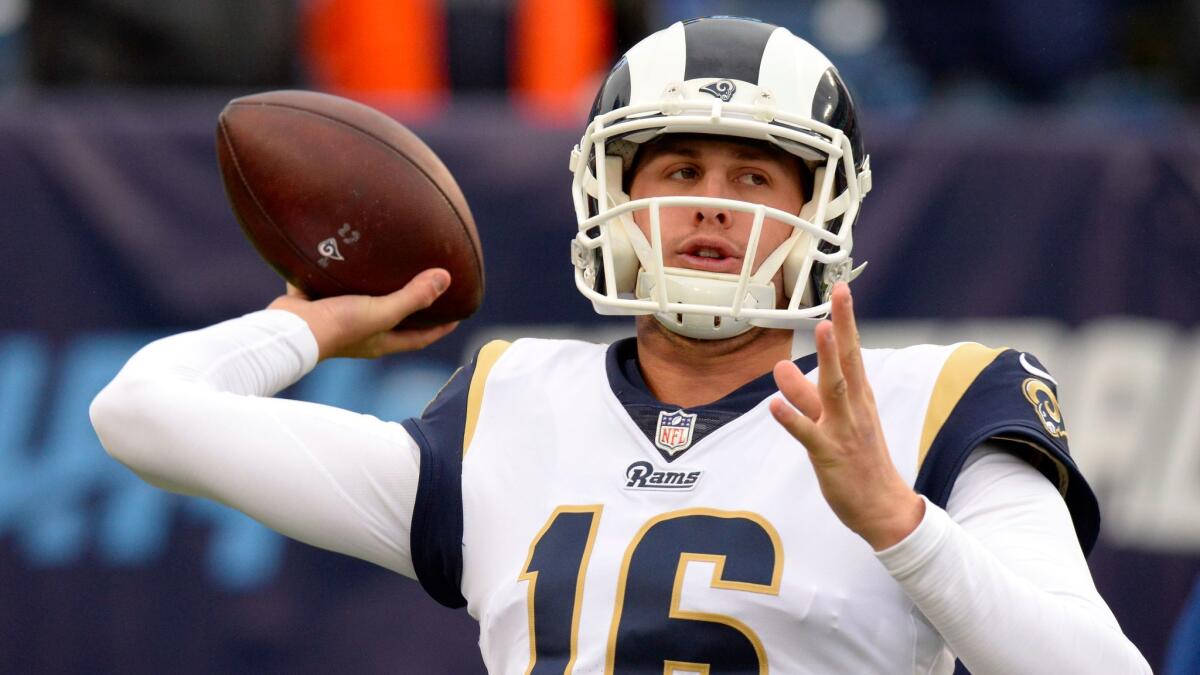NFL ratings finish regular season down about 10% from last year

The NFL finished the regular season with TV ratings that fell nearly 10% below the previous season because of changing viewing habits, controversies facing the league and a possible saturation point in the number of games available.
The decline in ratings â which was bigger than last yearâs 8% drop in viewership â meant the networks had to make good on commercials to NFL advertisers in order to compensate for the audience shortfall, according to one network executive who spoke on the condition of anonymity.
The executive said all carriers of NFL games â NBC, CBS, Fox and ESPN â âmade a lot less money than they expectedâ as a result of the ratings decline.
Each outlet pays more than $1 billion a year for NFL TV rights, with ESPN shelling out the most â $1.9 billion for âMonday Night Football.â
NFL games remain televisionâs biggest attractions by far: In 2017, they accounted for 37 of the 50 most-watched programs of the year, according to Nielsen. NBCâs âNFL Sunday Night Footballâ was the most-watched program in prime time, with 18.2 million viewers this past season. However, the figure is down from 20.3 million viewers in 2016 and 22.5 million in 2015.
The viewing habits that are disrupting the rest of television are also starting to affect the once seemingly invincible NFL. Younger viewers are more content to watch highlights on their mobile devices than sit through a three-hour game.
Also, networks have done research that indicates a significant number of fans, especially older ones, were turned off by players who chose to kneel during the playing of the national anthem at the start of games as a way to protest police brutality in urban communities.
Mike Mulvihill, executive vice president for research, league operations and strategy for Fox Sports, said Nielsen data does show viewers are dropping out. The average number of games a viewer watches in a season has declined from 18.8 in 2015 to 16.5 in 2017. âThatâs a pretty meaningful drop,â he said.
Mulvilhill noted that the ratings decline for Foxâs Sunday games was more pronounced at the start of the season, when the anthem protests were a major story and President Trump was weighing in. But as the season went on and the controversy waned somewhat, the ratings decline narrowed. Foxâs Sunday package was down just 2% between weeks 11 and 17 of the season, after being down 8% in the weeks two through 10. Fox was down 22% in the seasonâs first week, when a hurricane hit Florida.
The addition of Thursday night games over the full season and occasional early Sunday morning contests from London meant people had more football to watch and could have reached their saturation point earlier.
The decline is also being attributed to the availability of NFL content outside of conventional TV broadcasts. The NFLâs Red Zone cable channel, which takes viewers to different games whenever there is a scoring opportunity, is drawing about 1 million viewers on Sunday, pulling fans away from their regional games on CBS and Fox.
Online video highlights are also cutting into TV time.
âThe audience for NFL highlights on YouTube have become pretty substantial,â Mulvihill said. âThose highlights can be eight, nine or 10 minutes long, and I do worry they can be serving as a disincentive from watching the live game.â
Mulvihill also believes the continued growth of cable news viewing, driven by interest in the often frenetic Trump White House, is pulling viewers away from the NFL. Cable news viewing was up 66% year over year Sunday afternoons, and that means older male fans were probably pulled away.
Injuries were also a factor, as three of the leagueâs most dynamic stars â Aaron Rodgers of the Green Bay Packers, J.J. Watt of the Houston Texans and Odell Beckham of the New York Giants â were sidelined for most of the season.
But even with the ratings decline, the value of NFL content is not expected to diminish as tech companies are looking for must-have video content. Verizonâs new deal with the NFL to distribute games on mobile phones pays $400 million to $500 million a year, nearly twice as much as its last deal.
Twitter: @SteveBattaglio
UPDATES:
2:40 p.m.: This article has been updated with additional analysis and data on the viewership drop.
This article was originally published at 10:05 a.m.
More to Read
Inside the business of entertainment
The Wide Shot brings you news, analysis and insights on everything from streaming wars to production â and what it all means for the future.
You may occasionally receive promotional content from the Los Angeles Times.











